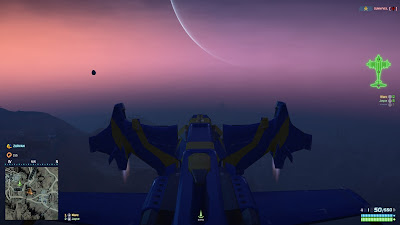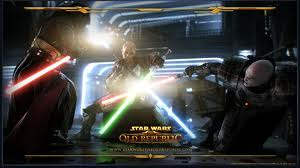So what does Planetside 2 have to offer to hold your
attention? In terms of game mechanics, the certification system presents the
standard Skinner box found in every multiplayer FPS these days. You put your
time in, and get your new guns and upgrades out. Despite being an entirely obvious
and transparent system, it still provides little moments of pure satisfaction when
you unlock each item.
Beyond that mechanics are fairly standard fair. The vehicles
and different classes provide the means for you to mix up your play. Either
trying something new or enabling different strategies. Some of my favourite moments
have come from swapping class in the thick of battle. If I’m moving to assault a
watch tower, I always swap to Light Assault. Being able to jetpack between floors
often allows you to flank opponents, like an Eagle swooping in on scurrying
prey.
The core gameplay has held up well through a few minor
balance tweaks. Each faction has its own distinct approach to weapon design, so
it’s important to do your research into the weapon handling before you invest
to heavily into a character. Regrettably researching weapons is also advised
before spending any certifications. You can free trail weapons, but for only thirty
minutes and without any weapon modifications. So you can only get a brief taste
before buying.
Sony has shown that they’re happy to throw out a lot of
deals for paying customers. In the run up to Christmas there was a series of
daily deals that saw fifteen per cent off all items, and the option to buy triple
in-game currency. There have been some
pay-to-win accusations thrown around on the game forums. However, having spent
the time and effort to unlock and trail different weapons; the choices available
are side-grades. The real problem is the few underwhelming weapons that can be
bought. Those few items often specialise too much in particular area such as
close quarters, and then barely outperform the well-rounded options. This
leaves players with buyer’s remorse until Sony gets round to doing a much
needed rework.
At the moment, the longevity of Planetside 2 comes from only
a couple of different sources. If you’re the sort of player who enjoys the
standard multiplayer FPS gameplay, there’s plenty here to keep you going. The
certification system is extensive, so there’s always something to work towards.
The second reason to keep playing is getting involved in the community. Joining
up with an Outfit provides great structure to the game. Co-operating with like-minded
people to achieve dominance over the continents is a challenging goal. Although
currently there is little reward for doing so, only a minor discount on acquiring
particular resources such as vehicles and grenades.
The ‘meta-game’ is set to receive much needed expansion in
the future as Sony has hinted at what’s on the drawing board. Possibilities we
might see include extra continents, naval combat, a fourth AI faction and
low-orbiting carriers acting as mobile bases. Whether or not this all makes it
into the game, it shows there are more ideas to come.
For the time being, Planetside 2 still has the ability to
stand out. However, as time goes on Sony may need to look at ways of making the
game more accessible to new players. It’s hard to bridge the experience gap to
veteran players. But the in-game information on territory control and its
importance is still lacking. Also there’s a big difference between a player wielding
a weapon of choice with a twenty five per cent health bonus, and someone new
clutching a stock carbine.





















































